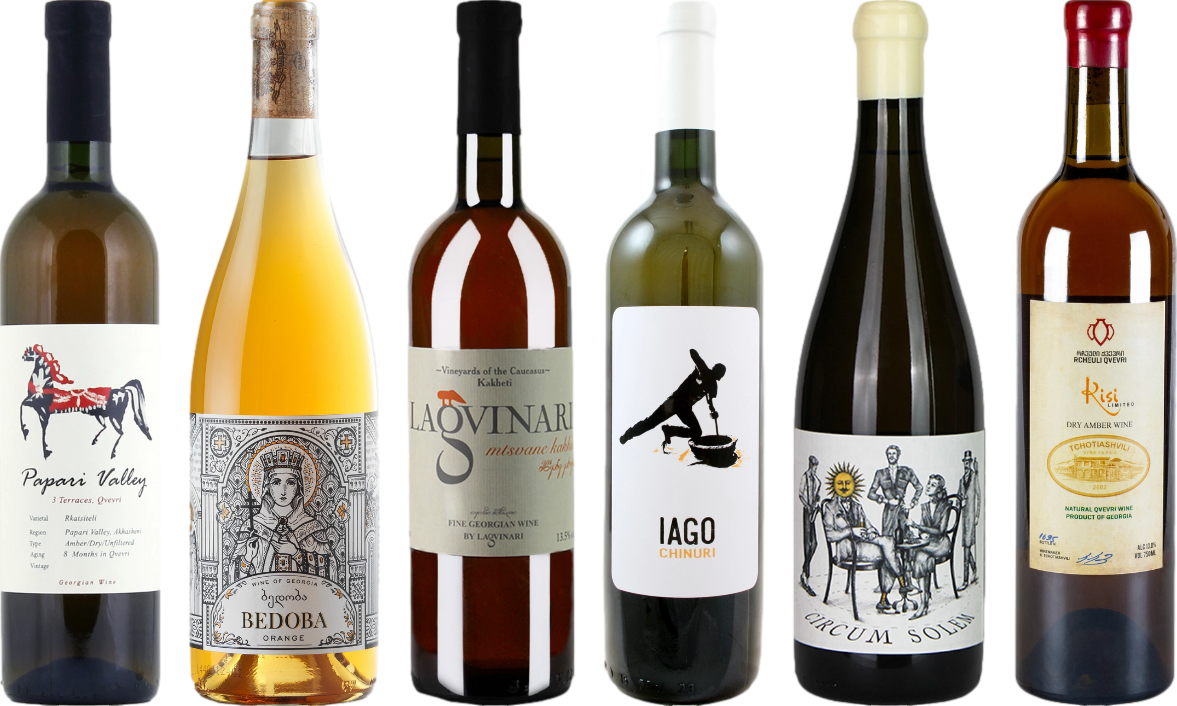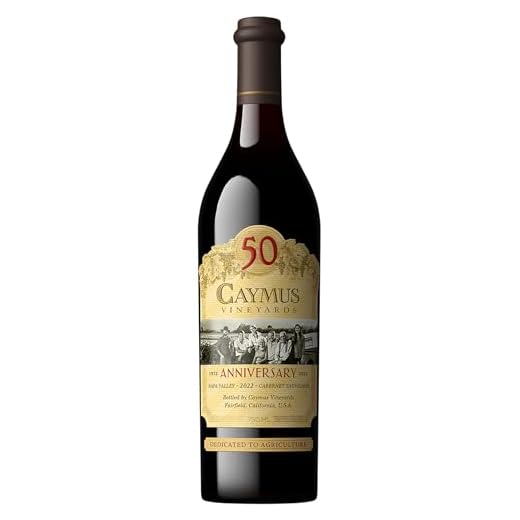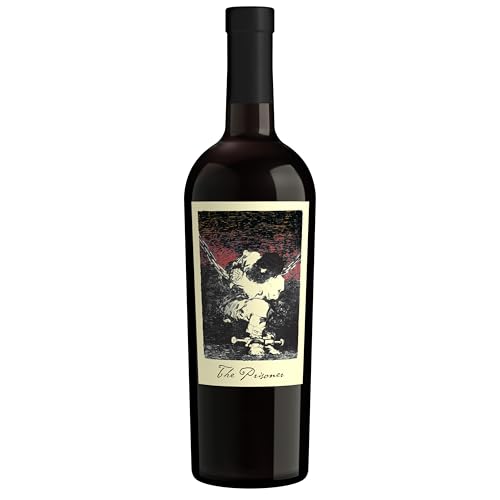



For an extraordinary experience, I highly recommend a glass of Barolo. This Italian red, made from Nebbiolo grapes, captivates with its rich aromas of cherry, rose, and tar, complemented by earthy undertones. Its robust structure and complex flavor profile make it a fantastic companion to hearty dishes, particularly truffle-infused pasta or grilled meats.
If you’re seeking something lighter, a Sauvignon Blanc from New Zealand stands out. Its zesty acidity and bright notes of citrus and tropical fruits offer a refreshing sip, perfect for seafood or salads. The vibrant character of this varietal brings a delightful balance to any warm-weather gathering.
For those who prefer bubbles, consider a grower Champagne, particularly from the Montagne de Reims. These artisanal producers craft exquisite bottles with layers of brioche, almond, and apple, providing a nuanced experience that elevates both casual and celebratory moments. Pair it with oysters or a charcuterie board for an indulgent treat.
Lastly, don’t overlook the charm of a well-crafted Grenache from Spain. This varietal, often found in blends, showcases ripe berry flavors and spicy notes, making it versatile for various cuisines. Enjoy it alongside roasted vegetables or a savory paella for a harmonious match.
Exceptional Choices for Enjoyment
For a remarkable experience, I recommend trying a 2016 Domaine Serene Evenstad Reserve Pinot Noir. Its rich cherry and raspberry notes combined with a hint of earthiness create an alluring profile, ideal for pairing with roasted duck or mushroom risotto.
White Delight
If you prefer a refreshing option, consider the 2018 Domaine Ferret Pouilly-Fuissé. This Chardonnay offers a balance of bright acidity and creamy texture, showcasing flavors of green apple, pear, and a touch of minerality. Perfect alongside grilled shrimp or a creamy pasta dish.
Unique Sparkling Selection
For sparkling aficionados, the 2014 Schramsberg Blanc de Blancs stands out. This elegant bubbly displays notes of lemon zest and toasty brioche, making it an excellent choice for celebrations or pairing with oysters on the half shell.
Explore these selections for an enriching experience that highlights the diversity and complexity of fine varietals. Each bottle tells a story, waiting to be discovered with every sip.
Identifying Your Personal Preferences
Start by tasting a range of varietals to discover what resonates with your palate. Experimentation is key. Here are some steps to refine your choices:
Explore Different Varietals
- Try a selection of whites: Sauvignon Blanc, Chardonnay, Riesling.
- Sample reds like Cabernet Sauvignon, Pinot Noir, Syrah.
- Don’t overlook rosés and sparkling options for variety.
Assess Flavor Profiles
Pay attention to characteristics such as fruitiness, acidity, tannin levels, and sweetness. Take notes on what you like:
- Fruity notes: citrus, berry, stone fruit.
- Acidity: crisp and refreshing or smooth and mellow.
- Tannins: soft and velvety versus bold and astringent.
- Sweetness: dry, off-dry, or sweet.
Pair your selections with different cuisines to gauge compatibility. Certain dishes can enhance or clash with flavors. Consider these pairings:
- Seafood with crisp whites.
- Grilled meats alongside robust reds.
- Spicy dishes with off-dry options.
Engage with local sommeliers or wine educators. They can guide you toward selections based on your preferences. Participate in tastings to expand your knowledge and sharpen your taste. Remember, wine appreciation is a personal journey; trust your instincts and enjoy the process of discovery.
Exploring Popular Varietals and Their Flavors
For a delightful experience, consider a Pinot Noir. This red variety often showcases elegant red fruit profiles like cherry and raspberry, complemented by earthy undertones. Ideal for pairing with duck or salmon, it offers a refined palate that many appreciate.
Sauvignon Blanc stands out with its zesty acidity and vibrant citrus notes. Expect flavors of lime, green apple, and occasionally a hint of herbaceousness. This white pairs excellently with seafood dishes or salads, enhancing the freshness of the meal.
Another remarkable option is Malbec. Known for its deep color and rich flavors, it typically features dark fruits such as blackberry and plum, along with hints of chocolate and tobacco. This robust choice shines alongside grilled meats, making it a favorite at barbecues.
If you prefer something sweeter, try Riesling. Ranging from dry to sweet, it often presents floral aromas with notes of peach and apricot. This versatile selection pairs beautifully with spicy Asian cuisine, balancing heat with its sweetness.
Lastly, Chardonnay offers a variety of styles, from crisp and mineral-driven to creamy and oaky. Expect flavors of apple, pear, and sometimes buttery notes. It pairs well with roasted chicken and creamy pasta dishes, making it a popular choice for many occasions.
Understanding Wine Regions and Their Unique Profiles
Each region offers distinct characteristics that shape the flavors and aromas found in their products. For example, Napa Valley in California is renowned for its bold Cabernets and rich Chardonnays. The warm climate allows grapes to ripen fully, resulting in wines with intense fruit flavors and smooth textures.
Bordeaux: A Classic Blend
Bordeaux, France, is synonymous with elegant blends, primarily featuring Cabernet Sauvignon, Merlot, and Cabernet Franc. The region’s gravelly soils and maritime climate contribute to the complexity and finesse of its offerings. Look for wines from the Left Bank for structured reds with aging potential, while the Right Bank typically provides softer, fruit-forward profiles.
Provence: The Rosé Capital
Provence, known for its stunning landscapes, produces some of the finest rosés. The region’s dry climate and sun exposure yield wines with bright acidity and refreshing flavors. Seek out those with hints of strawberry, peach, and citrus, perfect for warm weather pairings.
Exploring various regions deepens appreciation for the nuances each locale brings to the table. Understanding these profiles enhances decision-making, whether for personal enjoyment or curating selections for gatherings.
Pairing Wine with Food for Enhanced Flavor
Start with white varietals like Sauvignon Blanc and pair them with fresh seafood or salads. The acidity in these wines complements the brininess of oysters or the zest of a citrus dressing.
For richer dishes such as roasted chicken or creamy pasta, opt for a Chardonnay. Its buttery notes and oak aging enhance the flavors of the meal, creating a harmonious balance.
Red options like Pinot Noir work wonderfully with duck or mushroom dishes. The wine’s delicate fruitiness and earthiness amplify the umami in these foods.
Cabernet Sauvignon shines alongside grilled steaks or hearty stews. Its bold tannins and dark fruit flavors stand up to the richness of the meat, creating a satisfying experience.
When enjoying spicy cuisines, consider a slightly sweet Riesling. The residual sugar can counterbalance heat effectively, making dishes like spicy Thai or Indian curry more approachable.
| Food Pairing | Recommended Varietal |
|---|---|
| Seafood, Salads | Sauvignon Blanc |
| Roasted Chicken, Creamy Pasta | Chardonnay |
| Duck, Mushroom Dishes | Pinot Noir |
| Grilled Steaks, Hearty Stews | Cabernet Sauvignon |
| Spicy Thai, Indian Curry | Riesling |
Experiment with these combinations to discover the synergy between flavors. Each pairing brings out unique characteristics, enhancing both the food and the beverage experience.
Tips for Tasting Wine Like a Connoisseur
Start with a clean glass. Residue from previous beverages can interfere with flavor perception.
Observe the color. Hold the glass at an angle against a white background to appreciate the hue and clarity, which can indicate age and varietal characteristics.
Swirl gently. This aerates the liquid, releasing aromas trapped in the wine. Take a moment to inhale deeply, allowing the scents to envelop your senses.
Identify aromas. Try to pick out specific notes–fruits, spices, or floral elements. This helps refine your palate and enhances the overall experience.
Palate Techniques
Take a small sip and let it roll across your tongue. This allows you to experience the different flavor profiles on different areas of your palate.
Pay attention to the texture. Is it smooth, tannic, or creamy? The mouthfeel contributes significantly to the enjoyment of the experience.
Consider the finish. Note how long the flavors linger after swallowing, as a prolonged finish often indicates quality.
Practice and Explore
Regularly taste different varieties to expand your understanding and appreciation. Attend tastings or join wine clubs to explore new selections.
Keep a notebook. Document your observations, including aromas, flavors, and your overall impressions. This practice aids in refining your preferences over time.
Don’t hesitate to ask questions. Engaging with knowledgeable staff at wineries or wine shops can provide insights that enhance your exploration.
Finding Value Selections Without Sacrificing Flavor
Look for gems in lesser-known regions. Wines from areas outside traditional hotspots often provide extraordinary quality at lower prices. Consider exploring selections from regions like Portugal, Greece, and South America.
Focus on lesser-known varietals. While Cabernet Sauvignon and Chardonnay are popular, wines like Primitivo, Gruner Veltliner, or Carignan can offer remarkable taste without breaking the bank.
Consider purchasing from smaller producers. Many boutique wineries produce exceptional bottles that reflect their unique craftsmanship and terroir. Their limited production often leads to better values compared to larger, commercial brands.
Buy in bulk or by the case. Many retailers offer discounts for case purchases. This can significantly lower the cost per bottle, allowing for exploration of multiple selections without overspending.
Join wine clubs or subscriptions. These often provide curated selections at reduced rates. Look for clubs that focus on value-oriented offerings, ensuring you receive quality wines for your investment.
Attend local tastings. Engaging in tastings at wineries or local shops can introduce you to diverse options. This allows for sampling before committing to a purchase, ensuring satisfaction at a lower cost.
Lastly, pair your selections wisely. For instance, if you’re preparing a flavorful dish like how to cook lamb shanks in air fryer, consider a medium-bodied red that complements the dish without overshadowing it.
FAQ:
What factors influence the taste of wine?
The taste of wine is influenced by a variety of factors including the grape variety, the region where it is grown, the climate, and the winemaking process. Different grape varieties have distinct flavor profiles; for example, Cabernet Sauvignon tends to be bold and full-bodied, while Pinot Noir is often lighter and more delicate. The terroir, which encompasses soil type, weather conditions, and topography, also plays a significant role in shaping the wine’s taste. Additionally, the methods used during fermentation, aging, and bottling can further enhance or alter the flavor, contributing to the complexity of the final product.
How can I determine which wine I might enjoy the most?
To find a wine that suits your palate, start by considering the flavors you generally enjoy in food and beverages. If you prefer sweeter tastes, you might lean towards dessert wines or off-dry whites. If you enjoy bold, rich flavors, look for full-bodied red wines. Experimenting with different genres, such as whites, reds, rosés, and sparkling wines, can also help you discover your preferences. Attend tastings at local wineries or wine shops, where you can sample various options and receive guidance from knowledgeable staff. Keeping notes on the wines you taste can help you refine your choices over time.
Are there specific wine pairings that enhance the tasting experience?
Certain food and wine pairings can significantly enhance the tasting experience by complementing and contrasting flavors. For example, a crisp Sauvignon Blanc pairs well with seafood due to its acidity, which cuts through the richness of the fish. Red wines like Merlot often complement hearty dishes such as beef or lamb, while a light Pinot Grigio may be perfect for light pasta dishes or chicken. It’s also interesting to explore unconventional pairings, as personal taste can vary. The key is to consider the weight and flavors of both the dish and the wine to find a harmonious balance.
What are some popular wine varieties that are generally well-received?
Some popular wine varieties that are generally enjoyed by many include Cabernet Sauvignon, Merlot, Chardonnay, and Pinot Noir. Cabernet Sauvignon is known for its bold flavors and is often favored among red wine drinkers. Merlot is typically softer and fruitier, making it a great choice for those new to red wines. Chardonnay is a classic white wine that can be oaked or unoaked, offering a range of flavors from buttery to crisp. Pinot Noir is appreciated for its versatility and elegance. Trying these varieties can lead to discovering a preferred style, but personal preference ultimately plays a significant role in enjoyment.









